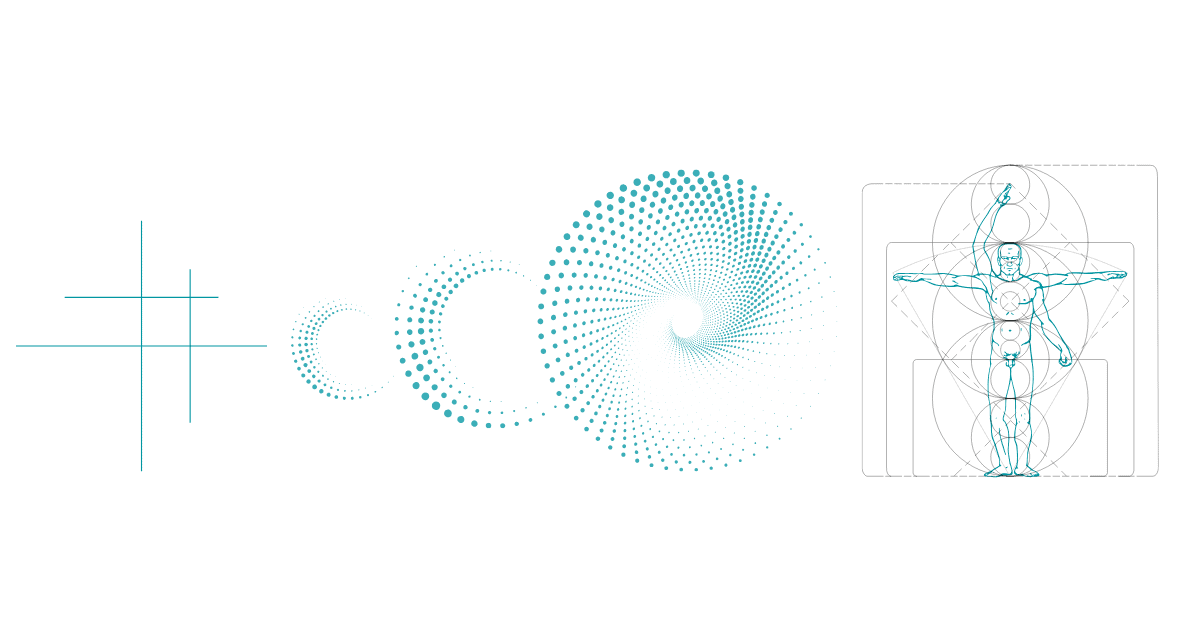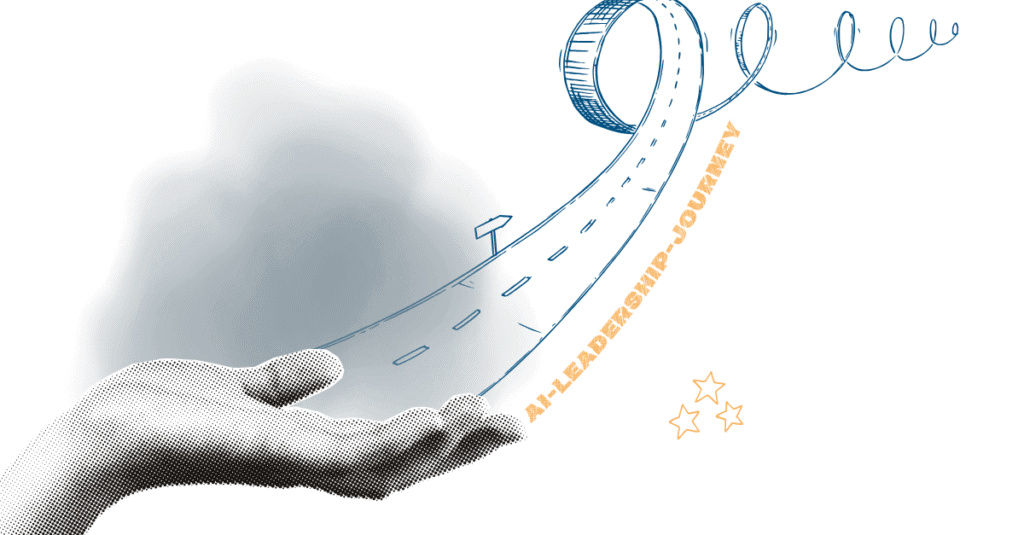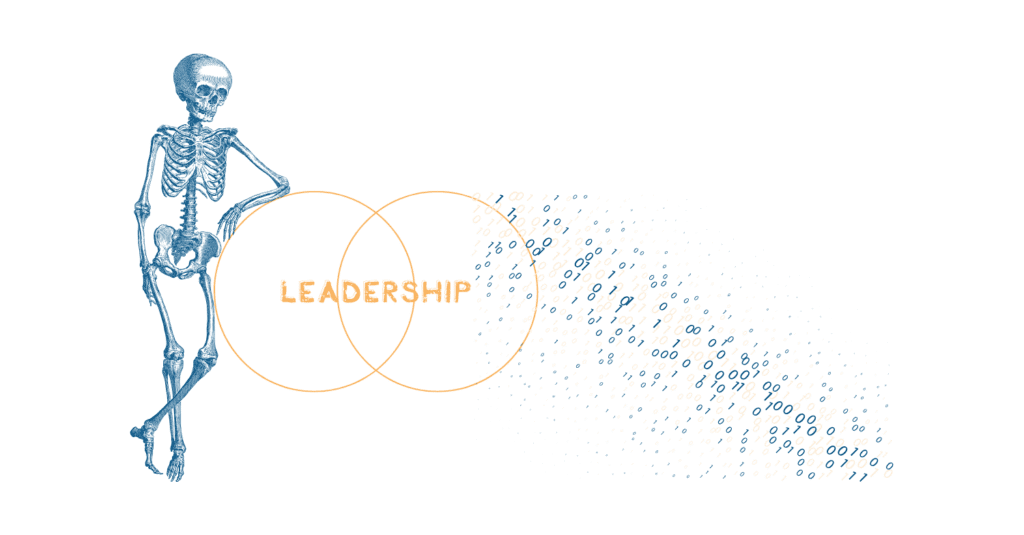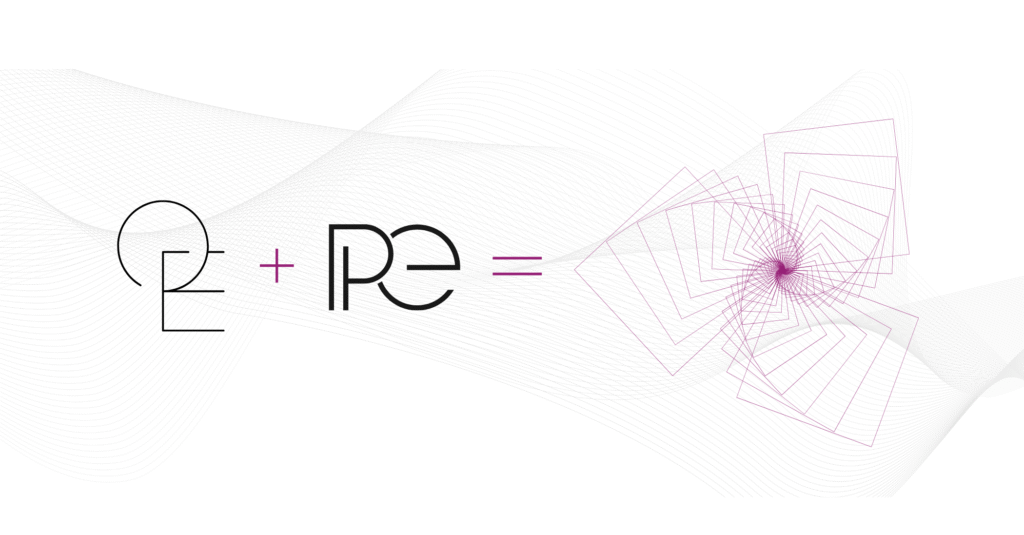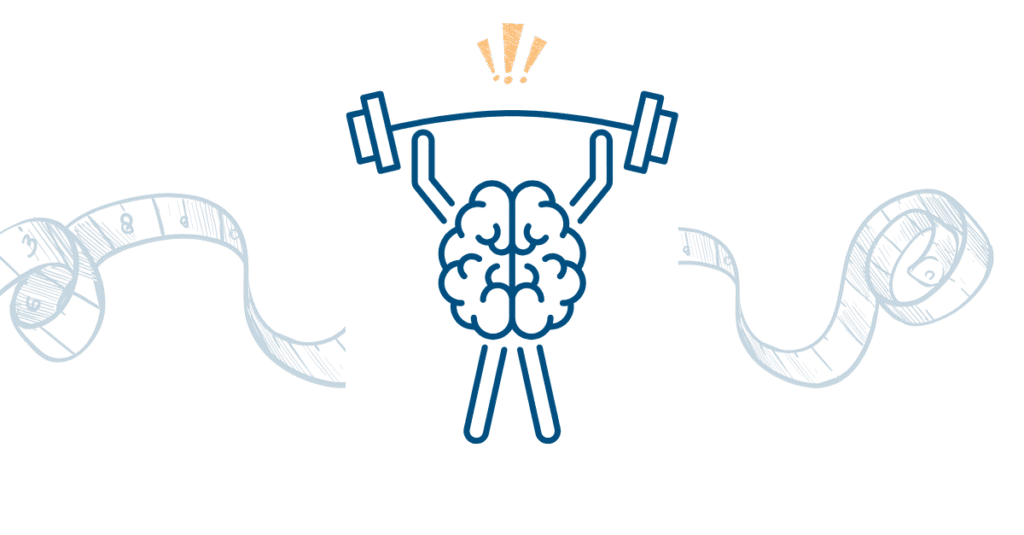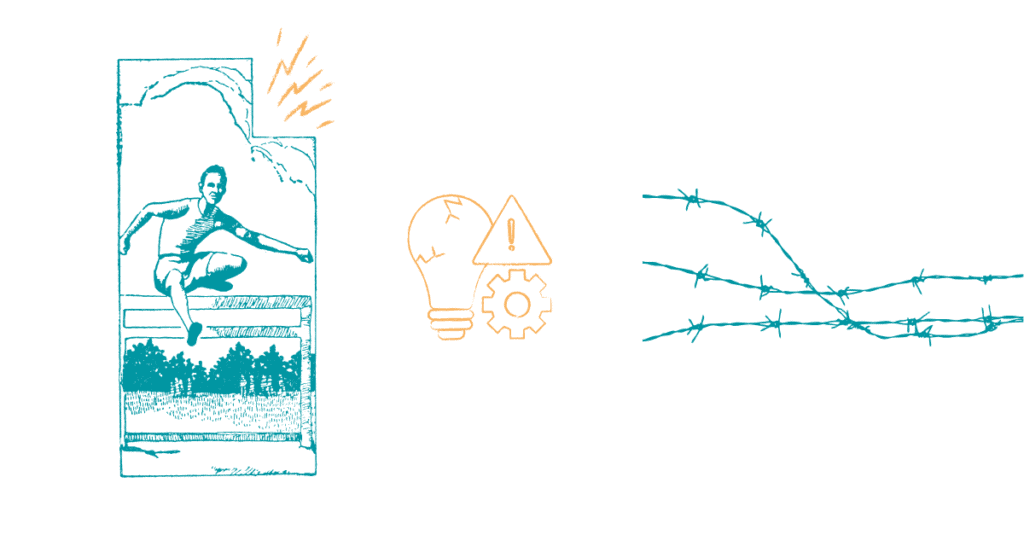The business world is in a constant state of change. New technologies, evolving markets, and increasing complexity present growing challenges for companies. Traditional management approaches often reach their limits. How can companies not only respond to change but actively evolve? The answer: integral organizational development.
What is Integral Organizational Development?
Integral organizational development is a holistic approach that examines a company in its full depth. Instead of focusing solely on aspects such as processes, structures, or leadership, this approach integrates different levels – from company culture and individual values to technical and economic factors.
The key difference: While traditional organizational development often focuses only on the “hard” factors like processes or structures, integral organizational development also addresses the “soft” elements: the internal mindset of leaders, the company culture, and the way people collaborate.
In short: it’s not just about the “what” – the visible changes – but also the “how” and “why” behind these developments.
Why Is an Integral Approach Necessary?
The world is more complex than ever. Companies relying on linear solutions quickly hit their limits. Integral organizational development helps to better address the challenges of the modern working world:
Managing complexity – Traditional hierarchies and rigid processes are often insufficient. A flexible, integral system enables faster and more effective adaptation to change.
Sustainably engaging employees – Change only works when it comes from within. Simply changing structures without bringing people along usually leads to failure.
Ensuring future viability – Companies that evolve holistically are more resilient and innovative. They can thrive in the long term, rather than chasing short-term fixes.
Integral organizational development lays the foundation for lasting success – by transforming companies not just from the outside, but by deeply influencing their culture and values.
The Foundations of Integral Organizational Development
To understand how integral organizational development works, it’s worth looking at its origins and core principles. This approach is more than just a modern management concept – it is based on well-founded scientific models and integrates multiple disciplines.
Where Does Integral Organizational Development Come From?
This approach is rooted in Ken Wilber’s Integral Model. Wilber, an American philosopher and theorist, developed a comprehensive framework that combines insights from psychology, sociology, neuroscience, and management. His goal: to create a holistic view of development and change.
Over the past decades, this model has evolved and is now used in leadership, organizational development, and corporate strategy. It enables deeper analysis by not only examining visible structures but also uncovering the hidden dynamics behind decisions and change.
What Makes This Approach Unique?
Unlike traditional models that focus on isolated aspects such as processes or hierarchies, integral organizational development simultaneously considers four key dimensions. This enables more sustainable change, as it addresses root causes rather than just surface-level symptoms.
A company is more than numbers, data, and facts – it’s also defined by its values, ways of thinking, and how people collaborate. Integral organizational development helps to connect and optimize these factors.
Why Is Traditional Organizational Development Often Not Enough?
Many companies rely on proven methods like lean management, agile transformation, or change management. However, these approaches usually address only certain areas:
- Lean management improves processes and efficiency and eliminates waste – but rarely addresses culture or individual mindsets.
- Agile transformation creates more flexible structures and faster decision-making – but requires deep changes in employee thinking.
- Traditional change management plans change methodically – but often fails in implementation if people aren’t emotionally engaged.
This is where integral organizational development comes in: it connects multiple levels of change to ensure that transformation is not only technical, but also cultural and personal.

The Four Quadrants in Practice: How Organizations Develop Holistically
A company isn’t just made up of processes, structures, and numbers – it is shaped by people, a unique culture, and external influences. To consider all of these dimensions, integral organizational development uses Ken Wilber’s Four Quadrants model. This framework enables deep, lasting transformation instead of superficial change.
What Are the Four Quadrants?
The model differentiates between individual and collective factors, as well as internal (subjective) and external (objective) aspects. This results in four quadrants:
Individual (Person) | Collective (Organization) | |
Inner Dimension | Mindset & Values (beliefs, motivation, emotions) | Culture & Shared Values (corporate culture, informal rules, collaboration) |
Outer Dimension | Behavior & Competencies (skills, leadership style, communication) | Structures & Processes (organization design, technology, workflows) |
Each of these four dimensions plays a vital role in the successful development of an organization. Change can only be effective in the long run when all quadrants are considered.
1. Individual Interior: Mindset & Values of Leaders and Employees
Every change begins in the mind. How do leaders perceive their roles? What values guide their decisions? What beliefs shape the corporate culture?
- Personal development as a foundation – Leaders must reflect on and develop themselves in order to lead others successfully.
- Mindfulness and self-leadership – Organizations benefit from leaders who act consciously and with strong values.
- Motivation and emotional intelligence – Employees are more engaged when their personal values align with those of the organization.
Without consciously working on mindset and values, any structural change remains superficial.
2. Individual Exterior: Behavior & Skills
The best mindset is of little use if it doesn’t translate into behavior. This quadrant looks at how leaders and employees apply their skills in day-to-day work.
- Leadership skills & communication style – How do leaders handle conflict? How do they give feedback?
- Innovation and learning culture – Companies that encourage continuous learning remain competitive in the long run.
- Collaboration and problem-solving – Teams that collaborate effectively find solutions faster.
Leadership trainings, coaching, and targeted skill development are essential to strengthen this quadrant.
3. Collective Interior: Organizational Culture & Shared Values
A company’s culture determines “how things get done.” It’s often invisible but has a huge impact on whether transformation succeeds or fails.
- Corporate culture as a success factor – An innovative culture fosters creativity and employee engagement.
- Agile principles & New Work – Companies that encourage autonomy and self-organization are more adaptable.
- Psychological safety – Employees must feel safe to share new ideas and admit mistakes.
Without conscious work on culture, structural changes often remain ineffective – as “invisible rules” shape everyday behavior.
4. Collective Exterior: Structures & Processes
Alongside culture and mindset, organizational frameworks are just as crucial. The best values and skills are useless if the structures don’t support them.
- Flexible organizational structures – Rigid hierarchies hinder innovation, while agile models allow faster decisions.
- Digital transformation & automation – Technology must align with company culture to be sustainable.
- Optimized processes & workflows – Clear and meaningful processes ensure efficiency and reduce friction.
This quadrant is often the most visible – but changes to structures and processes must always be aligned with the other three quadrants.
Why Must All Four Quadrants Be Addressed?
Many companies fail in their transformation efforts because they focus on only one area. They change structures (e.g., new processes, digital tools) and hope the culture will adapt automatically – or they invest in team-building without questioning outdated hierarchies.
Sustainable transformation only succeeds when all four quadrants are interconnected.
- A new strategy is ineffective if leaders don’t champion it with conviction.
- A modern corporate culture fails if old hierarchies and processes remain in place.
- Individual learning requires an environment that actually allows the application of new competencies.
That’s why integral organizational development isn’t a one-off intervention – it’s a continuous, systemic process.
The Importance of Consciousness Development for Leaders
Leaders are the key architects of an organization. They make strategic decisions, shape the corporate culture, and influence everyday interactions. Yet it is often overlooked that an organization can only grow as far as its leaders allow. Personal development among leadership is therefore a core success factor in integral organizational development.
Why Is Consciousness Development So Crucial?
Many transformation efforts fail because they offer technical solutions to cultural or psychological problems. A new strategy or restructuring process only leads to lasting success if the internal mindset of the leadership evolves as well.
- Leadership today is more complex than ever – rigid hierarchies are giving way to flexible structures, and employees expect meaning and participation.
- Decision-making requires deep reflection – simple solutions are rare; complex problems demand systems thinking.
- Personal development influences the entire organization – leaders provide orientation and shape the culture through their actions.
In short: those who want to transform their organization must start with themselves.
Stages of Consciousness Development: How Leadership Evolves
A valuable model for analyzing consciousness development is Spiral Dynamics. It describes how people and organizations evolve through different levels of thinking and behavior. Each developmental stage brings specific values, beliefs, and leadership styles.
Stage | Characteristics | Leadership Style |
Reactive (Survival & Control) | Fear-driven, power-focused, short-term thinking | Authoritarian, control through hierarchy |
Conformist (Stability & Order) | Emphasis on rules and traditions | Bureaucratic, rule-based |
Achievement-Oriented (Growth & Success) | Focus on numbers, data, and efficiency | Goal-driven, KPI-oriented |
Pluralistic (Community & Meaning) | Emphasis on collaboration, values, and self-fulfillment | Participative, values-based |
Integral (Holistic & Sustainable) | Complex thinking, meaning, and systemic responsibility | Adaptive, coaching, visionary |
Depending on their developmental stage, leaders perceive and fulfill their role in very different ways. While lower stages are dominated by power and control, higher stages emphasize self-organization, values-driven leadership, and holistic thinking.
How Can Consciousness Development Be Fostered?
The good news: leaders can evolve intentionally. This doesn’t happen by chance – it requires focused reflection and support. Key levers include:
- Self-reflection and coaching – Regular introspection and professional coaching help leaders gain new perspectives and ways of thinking.
- Mindfulness and emotional intelligence – A conscious approach to emotions and stress leads to better decisions and more authentic leadership.
- Mentoring and peer networks – Exchanging ideas with other leaders opens up new insights and helps uncover blind spots.
- Lifelong learning and interdisciplinary knowledge – Engaging with psychology, philosophy, or systems theory broadens the mental framework.
Conclusion: Consciousness development is not a “soft skill” – it is an essential foundation for sustainable leadership. Organizations that support their leaders on this developmental journey create the groundwork for genuine transformation.
Get exclusive access to cutting-edge insights and expertly curated tools on digital evolution, cultural transformation, future-forward thinking, resilience, mindfulness, and the future of work.
Practical Steps for Implementing Integral Organizational Development
Integral organizational development sounds compelling in theory – but how can it be implemented in practice? The key lies in a systematic yet flexible approach that addresses both structural and cultural change.
Here are the most important steps for shaping a successful integral transformation:
1. Diagnosis & Assessment: Where Does the Organization Stand?
Before initiating change, it’s essential to understand the organization’s current state. An honest assessment helps identify strengths and weaknesses.
- What challenges exist? – Are they more structural (e.g., rigid processes, lack of innovation) or cultural (e.g., low collaboration, high turnover)?
- What is the current organizational culture like? – Is there an open feedback culture? Are changes supported or resisted?
- At what developmental stage are leaders and teams? – Are decisions still largely hierarchical, or is self-organization already being practiced?
Methods for assessment:
- Employee surveys & feedback rounds
- Culture and values analysis
- 360-degree feedback for leaders
- Analysis of current structures and processes
Only when it’s clear which levels require change can the next step begin.
2. Initiate Cultural Transformation: Purposefully Develop Values & Mindset
An organization is only as strong as its culture. Therefore, transformation begins at a deeper level – with values, mindsets, and collaboration.
- Leaders as role models – Change starts at the top. Those who want to create an agile, trust-based culture must embody it themselves.
- Establish open communication and feedback – A transparent culture fosters cooperation and engagement.
- Create psychological safety – Employees must feel safe to admit mistakes and contribute new ideas.
Practical actions:
- Leadership workshops focused on consciousness development
- Co-creation of an internal values charter
- Regular retrospectives to reflect on collaboration
Without this cultural foundation, structural changes remain superficial.
3. Structural Adjustments: Agile Structures & New Forms of Collaboration
Once the culture is ready for change, structural adjustments can follow. These must be flexible enough to support organizational growth.
- Reduce hierarchy, strengthen ownership – Rather than strict control, companies can rely on self-organized teams.
- Establish efficient decision-making processes – Clear mechanisms enable greater agility and faster implementation.
- Create interdisciplinary teams and new roles – Instead of rigid departments, expert networks can form and collaborate flexibly.
Practical implementation:
- Introduction of agile methods (e.g., Scrum, Kanban)
- Clearly defined but adaptable roles and responsibilities
- Transparent communication and decision-making pathways
The goal: an organization that remains dynamic, innovative, and adaptable.
4. Support Individual Growth: Leadership Coaching & Employee Development
Any organizational transformation is only as strong as the people driving it. Continuous personal development is therefore a core part of the process.
- Leaders as coaches instead of traditional managers – The role of leadership shifts from giving instructions to guiding and enabling.
- Foster lifelong learning – Companies need to create learning formats that provide genuine growth opportunities for employees.
- Leverage mentoring & peer learning – Knowledge transfer between employees can significantly boost innovation.
Concrete measures:
- Individual coaching programs for leaders
- Internal learning platforms and knowledge-sharing programs
- Peer exchange formats such as “Lunch & Learn” or “Learning Circles”
Companies that invest in their people lay the foundation for sustainable long-term success.
Conclusion: Change Is a Process – Not a One-Time Project
Integral organizational development is not a rigid concept but a dynamic, ongoing process. Companies that embark on this journey must recognize that deep transformation takes time – but the long-term benefits are well worth it:
- Sustainable change instead of superficial optimization
- Resilient and adaptable organizations
- Increased employee retention and innovation power
Those with the courage to evolve holistically will not only be more successful in the short term – they’ll create the foundation for a future-ready, resilient, and healthy organization.
triangility: Your Experts for Integral Organizational Development
Transforming your organization requires more than just new structures – it calls for a holistic change concept. This is precisely where triangility comes in.
- Individual coaching programs for leaders – Expand your self-awareness and develop your leadership competencies.
- Strategic organizational development – Tailored concepts for agile structures, cultural transformation, and innovation support.
- Holistic support – From the initial analysis to sustainable implementation – we’re by your side every step of the way.
Start your integral transformation now!
Get advice from our experts and make your organization future-ready.

Identify the maturity level of your organizational culture with the integral map.
Be a part of our new leadership community:
Regularly receive exclusive insider knowledge, practical tools and immediately implementable solutions on the subject of ‘New Leadership’.

Contact
Let Verena advise you individually on how you can lead yourself, your team and your organization more mindfully.

